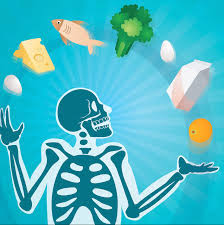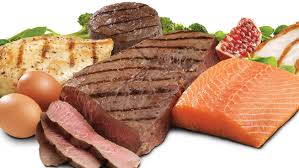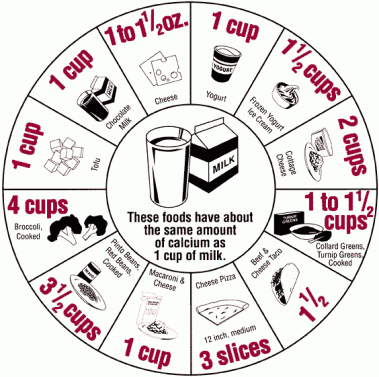6 Ways to Build and Maintain Stronger Bones-Osteoporosis: The Silent Thief Part 2
6 Ways to Build and Maintain Stronger Bones- Osteoporosis: The Silent Thief Part 2

For part 2 of my mini-series on Osteoporosis, I will focus on ways you can safely and effectively build and maintain strong bones as a way of preventing Osteoporosis. Nutrition and exercise are the two ways we can most easily help our bones stay strong!
- Consuming Adequate Protein for your Bones: While Calcium and Vitamin D are essential building blocks for our bones, protein is also essential. It is protein that gives bone its strength and flexibility. Canada’s Food Guide recommends 2-3 servings of meat or meat alternatives/day. 1 serving of meat or meat alternatives is the equivalent to the palm of your hand (in both size and thickness). Meat includes beef, pork, poultry, and fish. Meat alternatives include beans, lentils, tofu, egg whites, nut butters.

- Consuming Adequate Protein for your Muscles: While consuming sufficient protein per day is essential for the health of bones, it also plays a key role in facilitating muscle growth. If insufficient protein is consumed, then muscles are weaker. And weaker muscles means you are less able to support yourself to prevent falls. And, typically, more falls means more fractures.

- Consuming Adequate Calcium for Bone: As part of the continual bone remodelling process, new bone is deposited and old bone is removed. In a child or young adult, new bone formation is greater than bone removal. However, as we age this process gradually begins to reverse, with primarily old bone being removed and very little new bone is deposited. Calcium is so important in our diets as we age because it can help regulate the rate at which bone is removed. By ensuring adequate calcium intake, bone loss can be slowed, and fracture risk reduced. For an adult over 50 years of age, 1200mg of Calcium per day is recommended. Calcium is fortunately available in a wide variety of food sources, however milk and milk products still tend to have the highest density of Calcium per serving. For example, 1 cup of milk contains 300mg of Calcium, while a 3cm cube of hard cheese contains the same amount! And, while some soy products can be an excellent source of Calcium, unfortunately only about 75% of calcium/serving is absorbed by our bodies (so it might mean you have to consume more soy products to reach the same amount of calcium absorbed in milk). For a complete list of Calcium content in common foods, check out this website: http://www.osteoporosis.ca/osteoporosis-and-you/nutrition/calcium-requirements/

- Taking a Vitamin D Supplement: Hardly any vitamin D is available through our diet, so it is necessary, especially for us Canadians who don’t get much sunshine, to consume it from a supplement. Vitamin D is essential for maintaining strong bones because it helps facilitate the absorption of Calcium from the gut. Essentially, if there is no vitamin D in the body, there is no way for all that calcium you are consuming to be absorbed from the gut and used to build strong bones. Healthy adults between 19-50 require 400-1000IU of vitamin D/day, while those over 50 should consume between 800-2000IU daily. Vitamin D3 (Cholecalciferol) is the supplement you should be looking for (and fortunately it is the most common form available). While the bottle should contain information on how much vitamin D3 is in each tablet or drop, if you are unclear always consult your health care provider or pharmacist.

- Exercise! Exercise is so important because it builds muscle mass and muscle strength, which in turn can help prevent falls and protect the spine! Not only that, but exercises aimed at increasing muscle strength combined with weight bearing physical activity help to prevent bone loss as we age. Strength training, posture training, balance training, weight-bearing aerobic training, and tai-chi are all effective ways to exercise your body and help keep your bones healthy! Canada’s Physical Activity Guidelines recommend that ALL adults (including those over 65 years of age) participate in 30 minutes of moderate to vigorous physical activity on most days of the week (5 days or more). With moderate exercise, you are breathing harder but still able to have a conversation if you wished. With vigorous exercise it becomes difficult to talk or sing. So, take your pick at the many physical activities available, but it is always best to check with your health care professional prior to beginning a physical activity regime so they can determine an appropriate starting point. And consulting a Personal Trainer is also an excellent way to get you motivated to exercise, and to ensure you are performing the exercises in a safe manner!

- Exercise- from a young age! Bone density peaks for females around 18 in girls and 20 in boys. After this point, bone loss starts to occur (albeit at a slow rate). This is why it is so important to encourage our children to be physically active from a young age! This way, by the time they hit their late teens or early 20s their peak bone mass is sufficiently high to maintain that bone mass throughout their adult life!

As always, it is always best to consult your health care professional prior to starting an exercise regime or consuming supplements to ensure the prescription is correct for you!
Dr. Elaine Screaton (DC, BSc) is a Chiropractor currently practicing at Synergea Family Health Centre in Calgary, AB.
References: